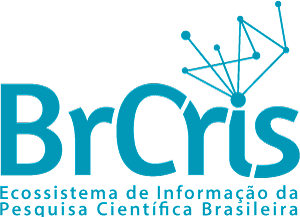The origins of IBICT date back to the early 1950s, when UNESCO suggested that the Getúlio Vargas Foundation (FGV) promote the creation of a national bibliographic centre in Brazil. Unesco's action at the time was decisive for the emergence of institutions of this kind in different countries. The initial choice of FGV was due to the fact that it was carrying out important activities in the area of bibliography and documentation.
At the time, the National Research Council (CNPq) was also being created, one of whose functions was to "maintain relations with national and foreign institutions for the exchange of technical and scientific documentation". Through a joint CNPq/FGV proposal, the Brazilian Institute of Bibliography and Documentation (IBBD) was created on 27 February 1954, by Decree of the President of the Republic No. 35,124, and became part of the CNPq's organisational structure.
The 1970s were marked by a reorganisation of science and technology activities in the country. The National Research Council was transformed into the National Council for Scientific and Technological Development, expanding its power, transforming it into a foundation and linking it to the Planning Secretariat and the Presidency of the Republic. Like the CNPq, the IBBD underwent a transformation, including a change of name to the Brazilian Institute of Information in Science and Technology (IBICT), with the publication of CNPq Executive Resolution 20/76. IBICT was then consolidated as the body that would coordinate S&T information activities in Brazil.
Since then, IBICT has also worked to promote the popularisation of scientific and technological information. Examples of this initiative are the "Science at Five" project, launched in 1987; a year later, the S&T Film Database; and, in 1993, the "Appropriate Technologies Programme".
Since 1975, IBICT has been acting as the National Centre of the ISSN Network, for assigning the international standard number to serial publications. From 1980, IBICT established itself as the Brazilian ISSN Centre and became the only member in Brazil to assign the ISSN code.
One of IBICT's first services, the National Collective Catalogue of Serial Publications (CCN), was created in 1954 by the then IBBD as a conventional card catalogue, providing information in person, by telephone or by correspondence. Since then, the service has kept pace with the evolution of technology, passing through the printed edition, microfiche and finally to its current electronic version.
The Bibliographic Commutation Programme (Comut), established by Ministerial Order 456 of 5 August 1980, is one of IBICT's traditional products, which makes it possible to obtain copies of technical scientific documents available in the collections of the main Brazilian libraries and international information services.
Today, IBICT is a reference in projects aimed at the movement for free access to knowledge. An example of this commitment is the Brazilian Digital Library of Theses and Dissertations (BDTD), launched in 2002, which uses the most modern open file technologies and integrates information systems for theses and dissertations from Brazilian teaching and research institutions. The BDBTD has a collection of more than 126,000 theses and dissertations from 90 educational institutions. This makes it the largest library of its kind in the world in terms of the number of records of theses and dissertations from a single country.
Also part of IBICT's recent history is the launch of CanalCiência, a portal for the dissemination of science and the popularisation of science, in 2002, which uses audiovisual media as a resource for including young people in the Information Society. It is worth noting that CanalCiência was nominated for the World Summit on the Information Society award as the best example of electronic content and creativity in this category.
In 2005, as well as improving its traditional services, IBICT expanded its activities to include other segments of society lacking organised information on the Web that were not yet part of its user community. To this end, it created the Social Inclusion Programme and began to use its expertise in organising, storing and disseminating information to support public policies aimed at the social field, particularly with regard to implementing direct actions in the field of information and digital learning.
